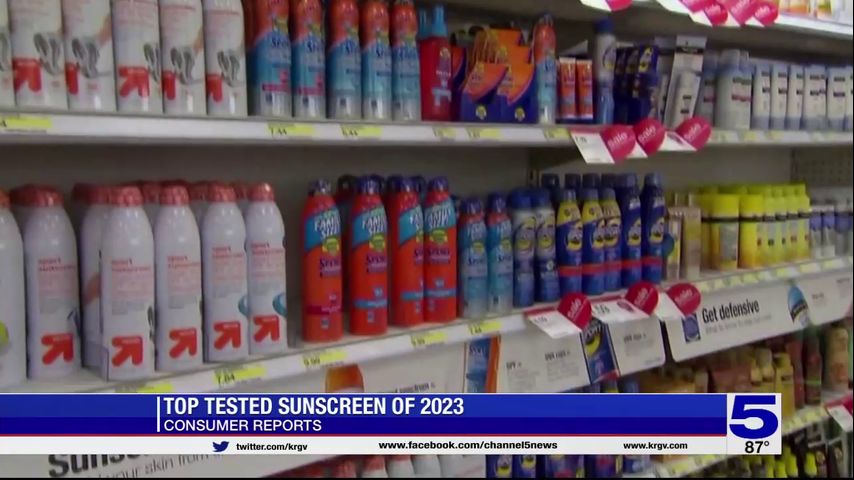Consumer Reports: Top tested sunscreens of 2023
From lotions to sprays to sports and reef-safe versions, sunscreens can have a dizzying array of confusing labels. Bottom line: You want one that works when summer’s sun is at its most intense. Consumer Reports tests dozens of varieties each year to find the best options that won’t burn your skin or a hole in your wallet.
Sunscreen is that magic elixir that helps protect you against skin cancer and premature aging. And the best part is that it’s easy to find and inexpensive. But with so many choices, how do you know which one to pick?
CR tests sunscreens to see how well they protect against two types of the sun’s rays: UVA and UVB, which cause aging, skin cancer, and sunburn.
To evaluate SPF, or sun protection factor, which is a measure of how well a sunscreen protects against UVB rays, expert testers apply sunscreen onto panelists’ backs, then have them to soak in a tub for 40 or 80 minutes, depending on the sunscreen’s water-resistance claim. Their backs are then exposed to simulated sunlight. The next day, the area is examined for redness.
To test for protection against UVA rays, the technicians apply sunscreen to plastic plates, expose them to UV light, then measure the amount of rays that are absorbed.
A sunscreen with a perfect score that’s also a CR Smart Buy is Coppertone Water Babies Lotion SPF 50. Don’t let the name throw you off; it’s not only for babies.
All of the top-rated sunscreens contain chemical active ingredients. In tests over the years, CR has found that mineral sunscreens don’t protect as well.
If you do prefer a mineral (or natural) sunscreen, CR says that California Kids Super Sensitive Tinted Lotion SPF 30+ provides acceptable protection.
As important as the sunscreen you choose is how you apply it. With lotion, use a teaspoon per body part or area that’s not covered up with clothing.
If you’re using a spray, hold the nozzle about an inch from your skin and spray until your skin glistens, then rub the sunscreen in. And for all types, reapply every 2 hours and after swimming.
Consumer Reports also recommends that parents choose lotion sunscreen for kids and use sprays only as a last resort, because children might inhale them, which could cause lung irritation.




